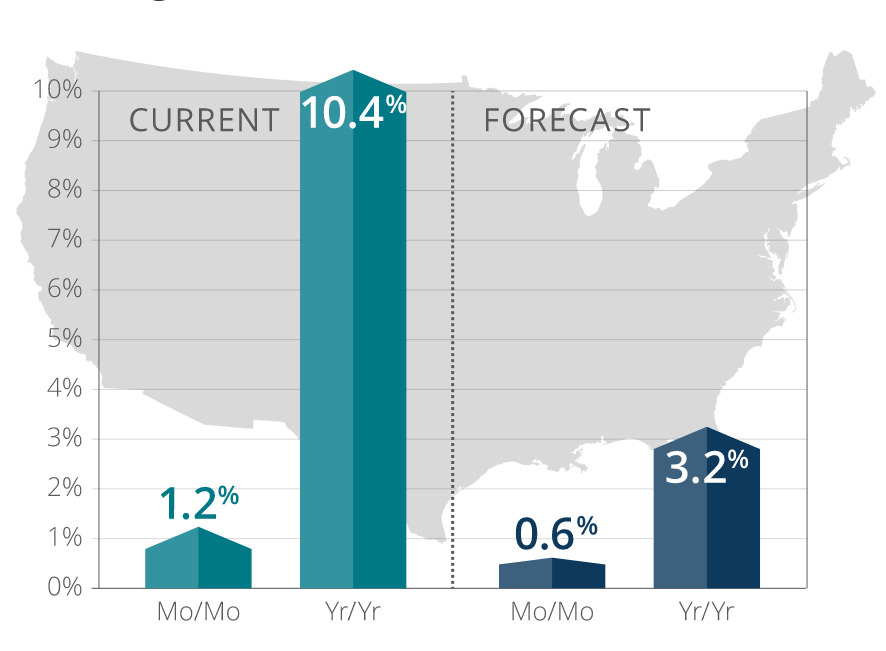 Home prices reached a 15-year high in February, as demand continues to clash with historically low supply, creating increased affordability challenges, as mortgage rates begin to rise.
Home prices reached a 15-year high in February, as demand continues to clash with historically low supply, creating increased affordability challenges, as mortgage rates begin to rise.
The CoreLogic Home Price Index (HPI) and HPI Forecast for February 2021 found that home prices increased 10.4% nationally, compared to February 2020. On a month-over-month basis, home prices increased by 1.2% compared over January 2021. Home prices are projected to increase 3.2% by February of 2022.
“Homebuyers are experiencing the most competitive housing market we’ve seen since the Great Recession,” said Frank Martell, President and CEO of CoreLogic. “Rising mortgage rates and severe supply constraints are pushing already-overheated home prices out of reach for some prospective buyers, especially in more expensive metro areas. As affordability challenges persist, we may see more potential homebuyers priced out of the market and a possible slowing of price growth on the horizon.”
CoreLogic analysis also shows homebuyers have steadily moved away from densely populated, high-cost coastal areas, in favor of more affordable suburban locales. The number of homebuyers in the top 10 metros with the largest net out-migration—including West Coast metros like Los Angeles, San Francisco, and San Jose—who chose to move to another metro increased by three percentage points in 2020 to 21% from 2019. This sentiment is reflected in CoreLogic’s recent consumer survey, which found that 57% of current non-homeowners on the West Coast feel the home options in their area are not at all affordable.

Metro areas where affordability constraints continue include Phoenix with a 16.2% year-over-year home price appreciation, Seattle with a 12.5% year-over-year rise, and the Los Angeles metro region with an 8.2% year-over-year rise in home prices. At the state level, Idaho, Montana, and South Dakota had the strongest price growth in February, up 22.6%, 19.5%, and 17.1%, respectively.
“The run-up in home prices is good news for current homeowners, but sobering for prospective buyers,” said Dr. Frank Nothaft, Chief Economist at CoreLogic. “Those looking to buy need to save for a down payment, closing costs, and cash reserves, all of which are much higher as home prices go up. Add to that a rise in mortgage rates and the affordability challenge for first-time buyers becomes even greater."
A recent report by Black Knight found that it now takes 20% of the median household income to make monthly payments on an average-priced home–back to the five-year average. In January and February, it was found that there were 125,000 fewer listings compared to 2020, pushing home for-sale inventory 40% below last year’s level.
“Rather than an influx of homes on the market, we’re now 125,000 fewer new listings in the hole compared to the first two months of 2020 and trending in the wrong direction,” said Black Knight Data & Analytics President Ben Graboske. “With higher interest rates and a continuing shortage of inventory, it will be important to keep a careful eye on both home prices and affordability metrics in the coming months.”

 DSNews The homepage of the servicing industry
DSNews The homepage of the servicing industry









